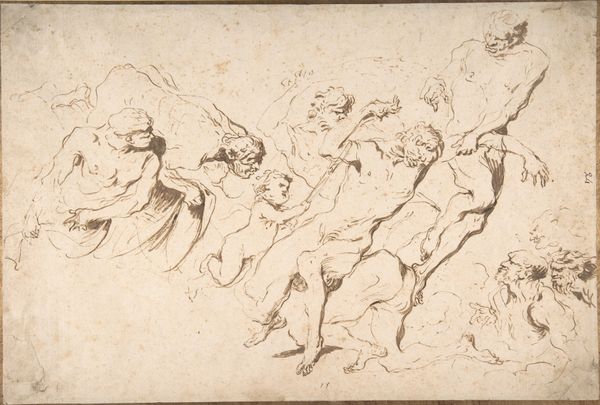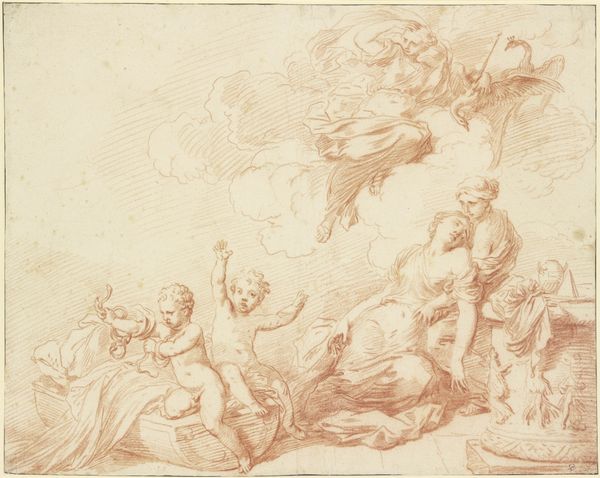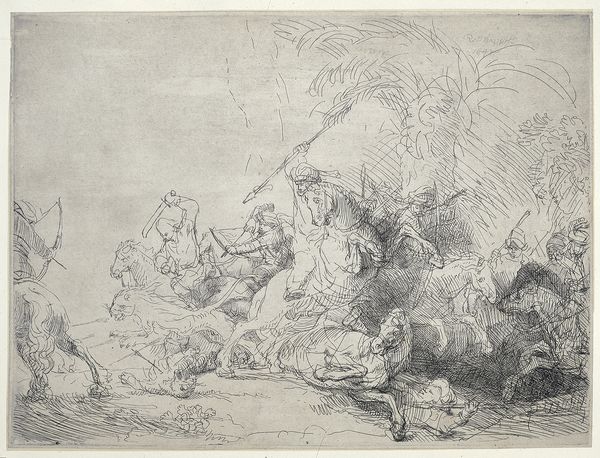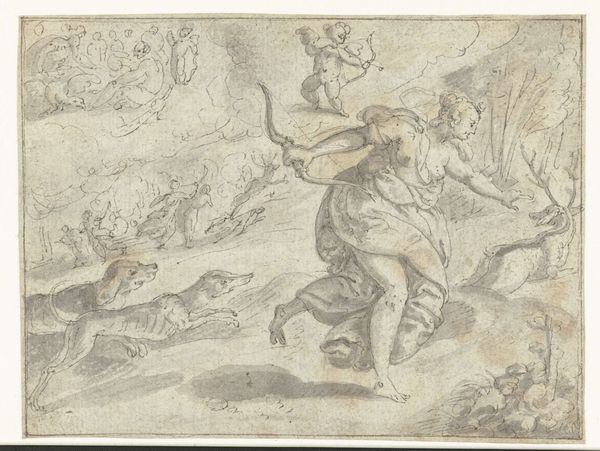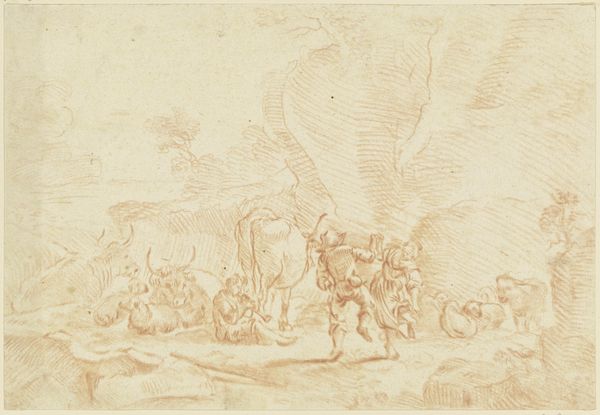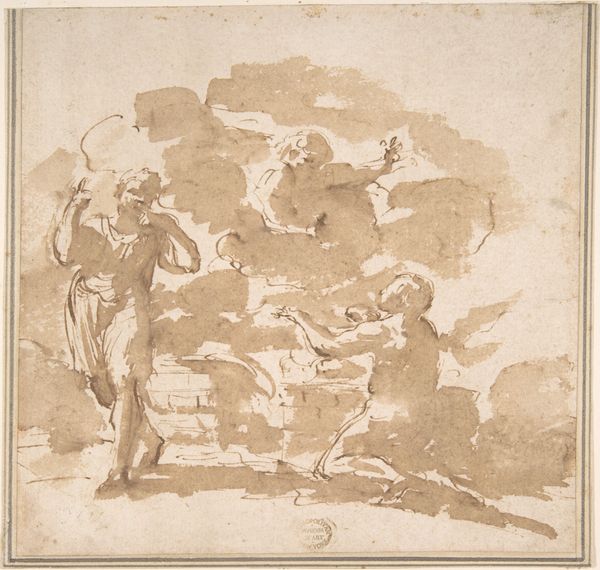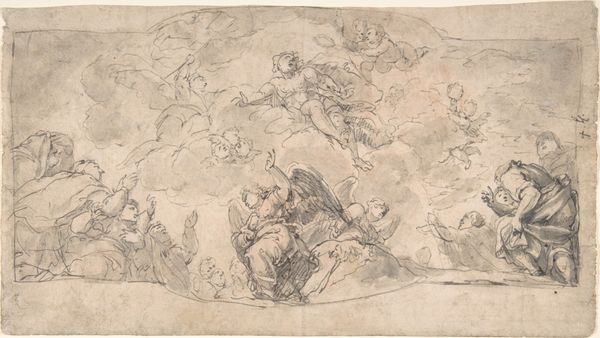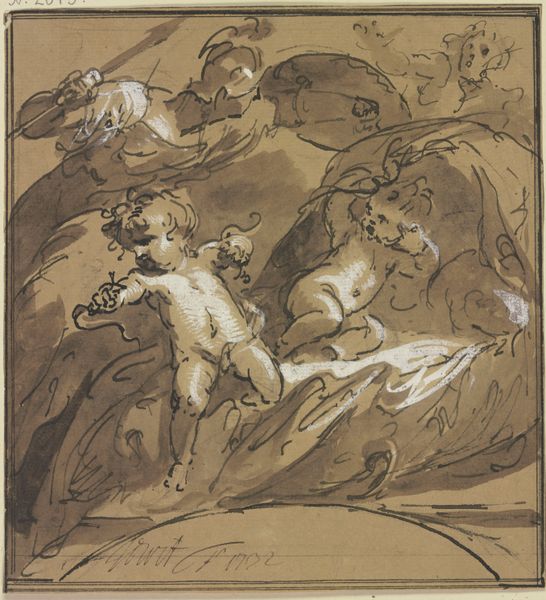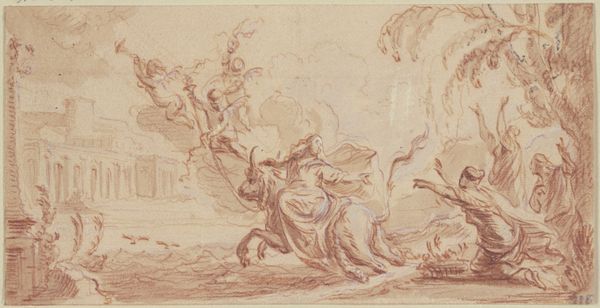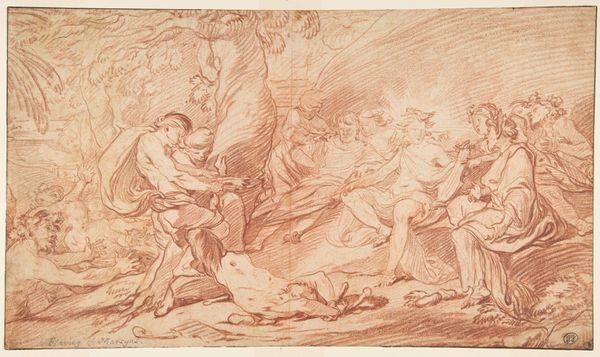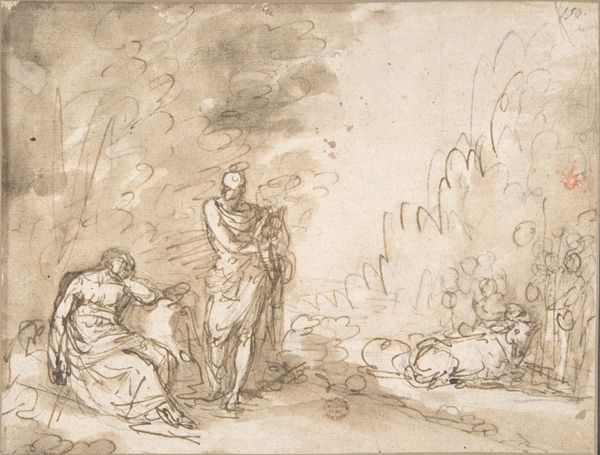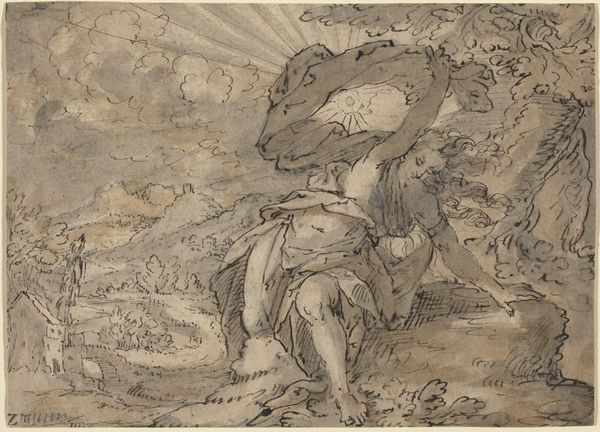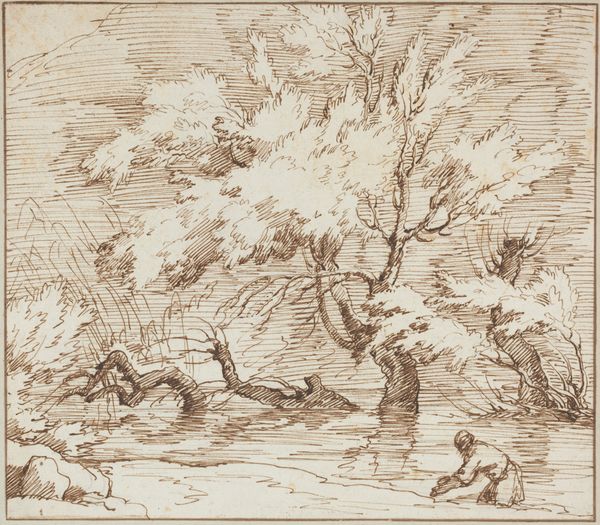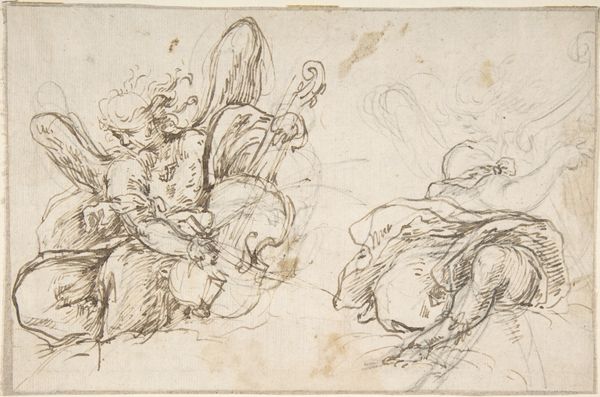
The Angel Appearing to Hagar and Ishmael in the Wilderness c. 1645
0:00
0:00
drawing, ink
#
drawing
#
narrative-art
#
baroque
#
ink painting
#
landscape
#
figuration
#
ink
Dimensions: sheet: 12.8 × 1.4 cm (5 1/16 × 9/16 in.) mount: 23.5 × 29.4 cm (9 1/4 × 11 9/16 in.)
Copyright: National Gallery of Art: CC0 1.0
Curator: Before us is Pier Francesco Mola's "The Angel Appearing to Hagar and Ishmael in the Wilderness," an ink drawing dating back to circa 1645. Editor: There's a real sense of desperation conveyed through the dynamism of line in this piece. The figures feel almost ephemeral, emerging from the landscape itself. Curator: Indeed, Mola's characteristic Baroque style uses swirling lines to great effect here. Observe how the angel, rendered with a flurry of strokes, descends into this narrative, a stark contrast to the grounded figures of Hagar and Ishmael. Editor: I find it interesting how the landscape almost seems to threaten them, overshadowing their forms, suggesting a sense of helplessness and their reliance on divine intervention. It’s also difficult to avoid commenting on this choice to emphasize such grand concepts as both women and divine figures become subject of art. Curator: A fascinating point. Considering the socio-political milieu of the mid-17th century, the emphasis on divine intervention in a landscape setting aligns with broader theological interpretations. Furthermore, it underscores the prevalent Baroque tendency to imbue sacred narratives with emotional drama. Editor: Also, the use of brown ink offers limited value, enhancing the drawing's tonal quality. And if you look carefully, Mola has used layering techniques to build contrast and texture on the bodies and wings of the angel. I appreciate how Mola masterfully captures an expressive, gestural aesthetic through very simplified means. Curator: Your observation echoes formalist analyses of the period that favored dynamism. I find this highlights that complex interplay between theology, individual struggle, and the aesthetics prevalent at that time. Editor: Looking at it again I admire its emotional resonance, an affecting snapshot of human endurance framed in the grandeur of faith.
Comments
No comments
Be the first to comment and join the conversation on the ultimate creative platform.
